A generation ago, aspiring sea kayakers traveled vast distances to seek out the sport’s leading lights at cultish gatherings they called symposiums.
Today, paddlers who are keen to develop their kayaking skills have myriad options to do so. Access to mentors and coaching is increasingly widespread—there’s a profusion of qualified regional instructors, thanks to the efforts of energetic local paddling shops and clubs as well as national paddling organizations. Social media has made it easier to connect with other local paddlers. And, yes, YouTube pupils can watch just about every skill demonstrated online. Think of it as the democratization of sea kayaking.
What does this mean for symposia? More competition for paddlers’ attention and smaller captive audiences.
Little wonder the average size of sea kayaking events has dwindled more than five-fold, from chaotic gatherings of 500 or 600 paddlers in symposia’s heyday, to intimate clutches of 40 to 100 participants today. But while some in the industry believe we’ve already heard the death knell for these events, most are cautiously optimistic about the future of symposia.
Where they’re headed, why some have gone away, and what role they play in shaping our sport depends on who you ask.
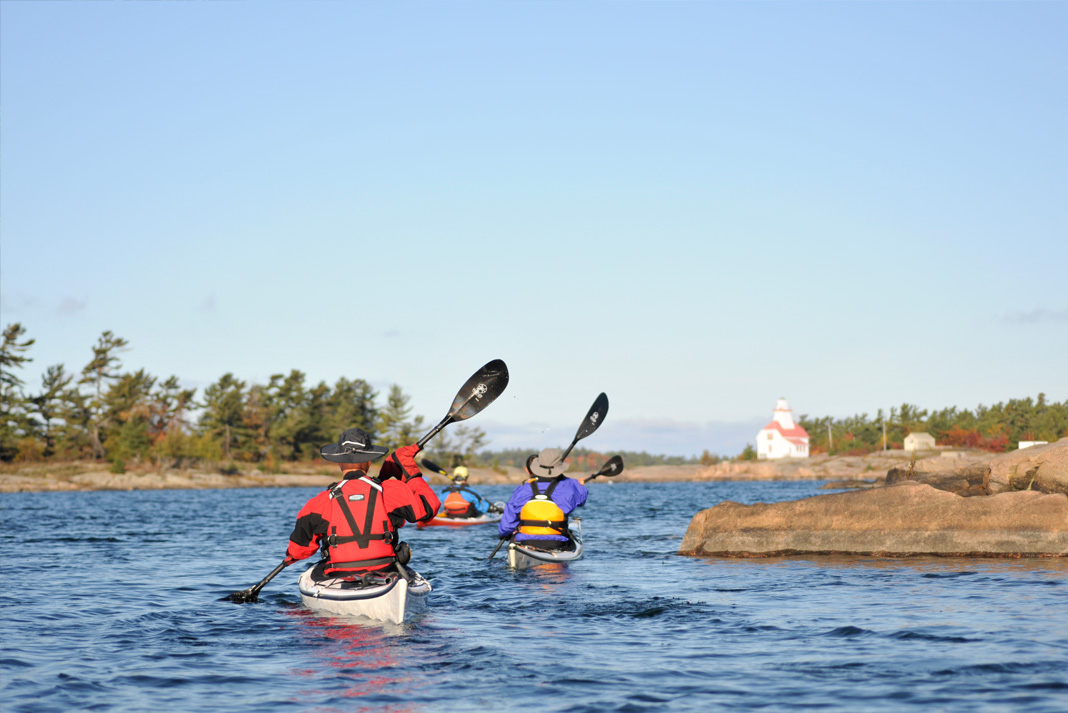
Great Lakes
If you map all of the kayak symposia across the U.S. and Canada, the highest concentration is clustered around the Great Lakes.
“We’re really fortunate, there are more symposiums here than anywhere else,” confirms Keith Wikle, founder of Go Kayak Now coaching in Kalamazoo, Michigan, and the Gales Storm Gathering, a rough-water event held annually on the Upper Peninsula.
“We have events catering to all levels, run by amazing and diverse shops, with incredible variety offering something for all niches. Paddlers on the coasts don’t have access to this many events or choices.”
To understand why the epicenter of North American sea kayaking lies in the Midwest, you have to reach back 40 years to the early days of our sport.
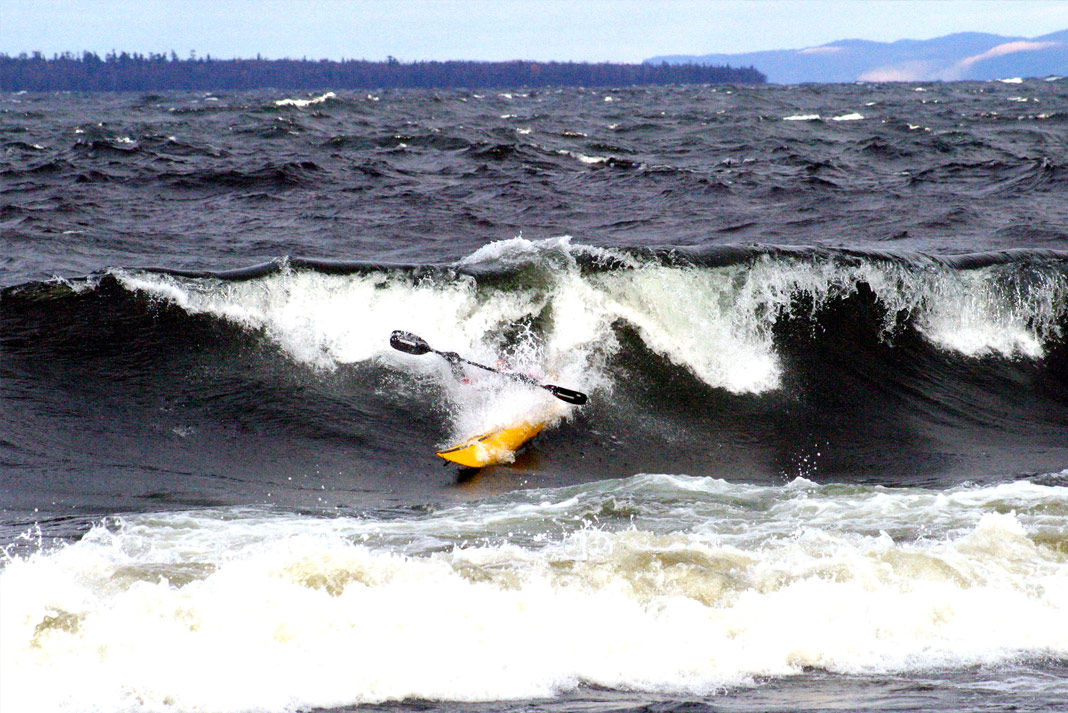
The originators
In 1979, world-class whitewater slalom paddler, Stan Chladek, founded Great River Outfitters in the Detroit area and set about shaping the nascent North American sea kayaking scene. Chladek’s shop was the first to import British-built kayaks designed for playing and expeditioning in rough waters, and the first to bring in BCU (British Canoe Union) coaches to lead training. He also established the Great Lakes Sea Kayaking Club and, in 1984, created two pivotal events: the infamous Gales of November Rendezvous, and one of the original granddaddies of sea kayak symposia, the Great Lakes Sea Kayak Symposium.
“Starting in the late ‘80s, Chladek made Gales the place to be—paddlers flew in from all over for the event,” recounts David Johnston, an instructor and hobby paddling historian based in Toronto, Ontario. For several years, the event drew upwards of 50 kayakers to the Canadian shore of Lake Superior, including the likes of Welsh expedition paddler Nigel Dennis, British kayak design pioneer Frank Goodman, and members of California’s notorious Tsunami Rangers.
“It was mayhem,” says Johnston. “There wasn’t anything like it happening on the coasts at that time. It formed the basis of sea kayaking as we know it today.”
Held the first weekend of November at Lake Superior Provincial Park, about an hour north of Sault Ste. Marie, Ontario, the Gales Rendezvous was an invitation-only event for the hardest of the hardcore. The weather was severe, and shattered composite kayaks and harrowing swims were not uncommon.
“It was a long way to go if you weren’t willing to paddle in eight-foot pounding surf,” remembers Al Anderson, who founded the considerably tamer West Michigan Coastal Kayakers Association (WMCKA) symposium in 1990 as a counterpoint to Chladek’s events. “Just showing up to camp in the frigid conditions earned one the distinction of being a truly macho paddler.”
Meanwhile, the more mainstream Great Lakes Sea Kayak Symposium—based on Lake Superior’s south shore in the town of Grand Marais, Michigan—established the template laying the foundation for nearly every other event to follow over the next 20 years.
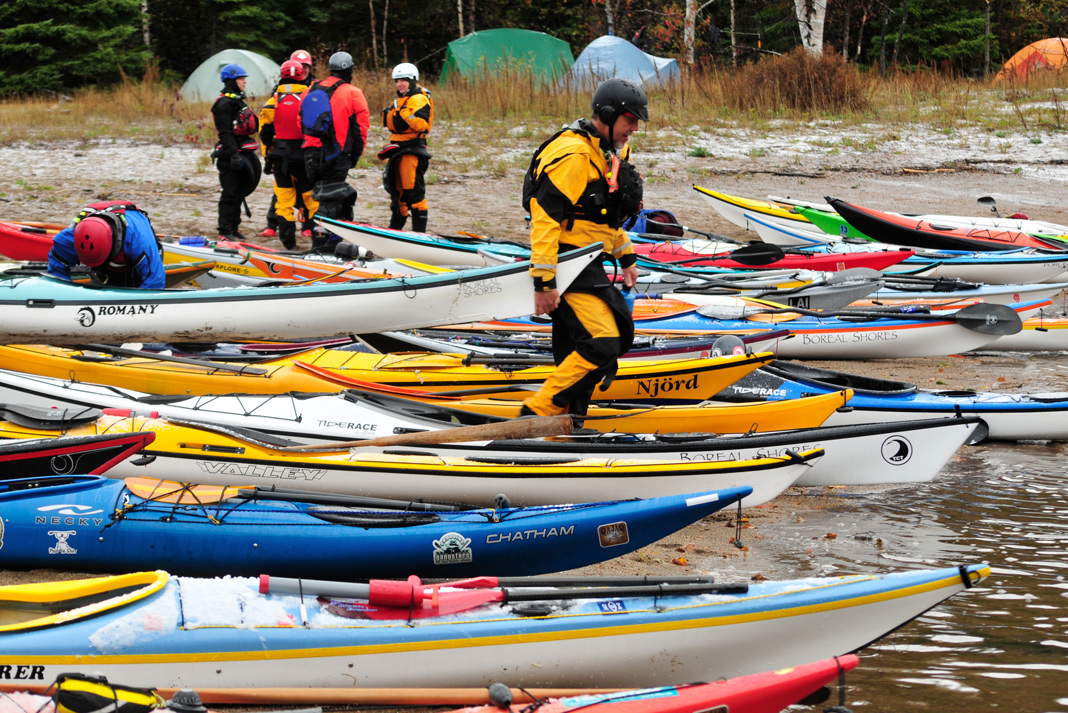
Delivering a combination of tours along the stunning Pictured Rocks coastline and instruction with top-level coaches, the Great Lakes Symposium became an annual pilgrimage for hundreds of Midwest paddlers.
Despite the event’s popularity, some former attendees recall an air of elitism from those early days. David Wells, the owner of Lake Superior kayaking center Naturally Superior Adventures, remembers showing up to a mid-‘90s Great Lakes Symposium with a North American-style sea kayak. The famously opinionated (and uncensored) Chladek paddled over and told Wells his ruddered kayak was a “coffin.”
The boom
By the early 2000s, a handful of grassroots, seat-of-the-pants kayak gatherings had snowballed into an array of symposia pulling hundreds of paddlers apiece—all before the dawn of social media.
The original Big Three—Great Lakes, Florida’s Sweetwater Symposium, and the once-1,700-strong West Coast Sea Kayak Symposium (more on this later)—were destinations enthusiasts cleared their calendars and drove through the night to attend. Sea kayak sales were booming, teal-and-purple paddling suits were still hot, and both diehards and those just catching the stoke looked to these symposia for their annual dose of instruction and kayaker camaraderie.
Sleepy Bayfield, Wisconsin, hosted celebrity speakers, coaches and an overflowing campground’s worth of kayakers at the Inland Sea Symposium. Organized by the non-profit Inland Sea Society since 1988, the June event raised support for Lake Superior conservation and kicked off the Apostle Islands guiding season for event partner, Living Adventures Inc.
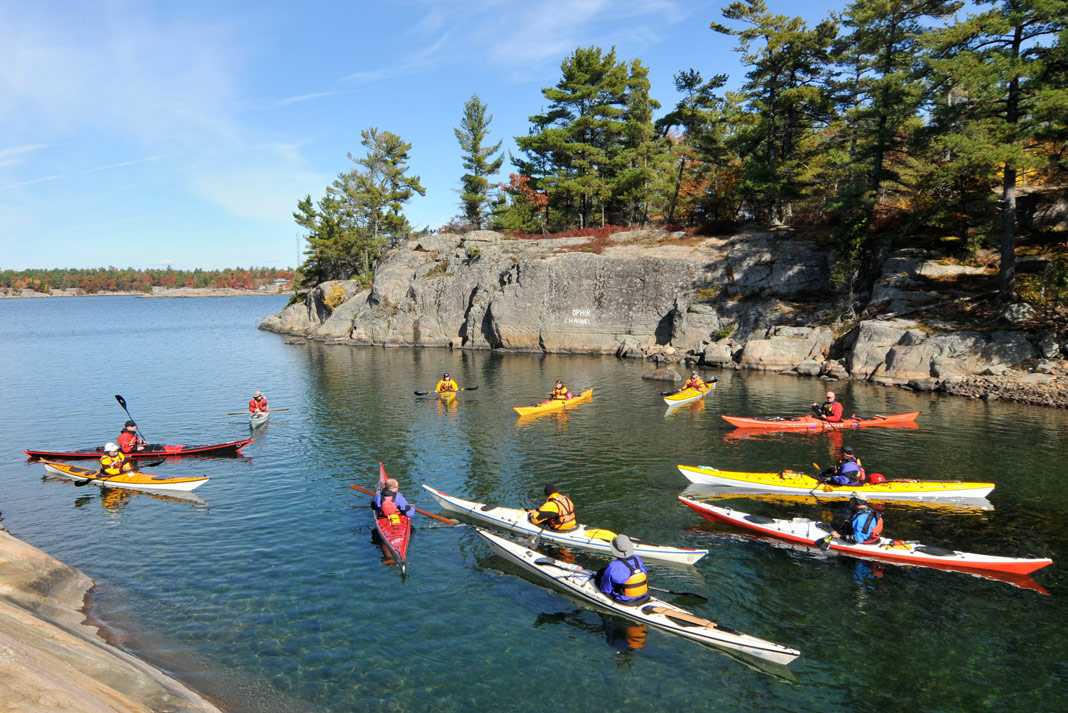
Near Parry Sound, Ontario, White Squall Paddling Center welcomed winter-weary paddlers and festival-goers to the annual Georgian Bay Kayak & Canoe Festival in early May. What started in 1989 as an informal open house for White Squall owners Tim and Kathy Dyer evolved in a few short years into a weekend-long symposium drawing as many as 325 people.
“We packed in a different session every hour, with six sessions per day,” Tim Dyer remembers with a laugh. The temperamental spring weather didn’t seem to dampen enthusiasm. “We gave people 10 minutes between sessions to grab a coffee and warm up by the bonfire. It was pretty frenetic—they’d be sprinting from session to session trying to squeeze it all in.”
An eclectic mix of on-land sessions—from woodcarving and wild edible hikes, to fire lighting with Survivorman’s Les Stroud—kept non-paddlers equally busy.
After the workshops and boat demos came the event’s famous cardboard kayak race, presided over by White Squall’s own “Captain Jack” Elliot. Finally, participants piled into an enormous tent erected on-site to watch paddling films and hear iconic Canadian folk artists and musical comedy acts like Fred Eaglesmith and The Arrogant Worms.
“We didn’t take ourselves too seriously,” offers Dyer when pressed for the secret to the event’s success. “It wasn’t a symposium you normally imagine—it was full-on but done in a folk festival atmosphere. There was something for everybody, not just the hardcore sea kayakers.”
But this kind of success takes tremendous time and energy to maintain. In 2009, the Dyers announced their 25th-anniversary bash would be the event’s last. “It wasn’t that interest went away,” Dyer explains. “We just felt like we played ourselves out and it was getting too big for us.”
In Wisconsin, the Inland Sea Society pulled the plug in 2011. Meanwhile, in Grand Marais, Chladek stepped away from the Great Lakes Sea Kayak Symposium and participation dwindled, with the event changing hands several times.
“We’re in a period now where there’s a changing of the guard,” says David Johnston. “In some places, no one has stepped up to take the torch. It takes a certain type of person—you have to be about community building to make it worthwhile. Otherwise, why would you take on a symposium?”
What gives a symposium longevity?
In 2003, Madison, Wisconsin-based paddlesports shop, Rutabaga, hosted its first annual Door County Sea Kayak Symposium targeting new and developing paddlers. Registration is capped at 150 to 160 participants, and the event sells out every year, says Rutabaga owner Darren Bush. He attributes Door County’s longevity to its focus on fostering a welcoming and robust paddling community.
“The extent symposia create community is the extent to which they succeed,” Bush states. “If you’re not creating a community, what are you doing? You’re teaching a bunch of classes in a row.”
Door County participants share meals and celebrate the day’s accomplishments together each evening, while an ice cream social, dedicated kids’ classes and all-ages guided tours ensure the event is family-friendly.
“The quality of instruction at most symposia is really good. That isn’t hurting the events,” Bush continues. “But if you’re not set up to create a sense of community, that’s where you lose people.”
West Michigan Coastal Kayak Association (WMCKA) symposium chair, Lynn Dominguez, a paddler and professor of outdoor studies at Central Michigan University, says it’s not that simple. While she agrees inclusivity, community and consistency of vision are key to symposia’s sustainability, a host of other factors—from market forces to geography and organizational factors—challenge event longevity.
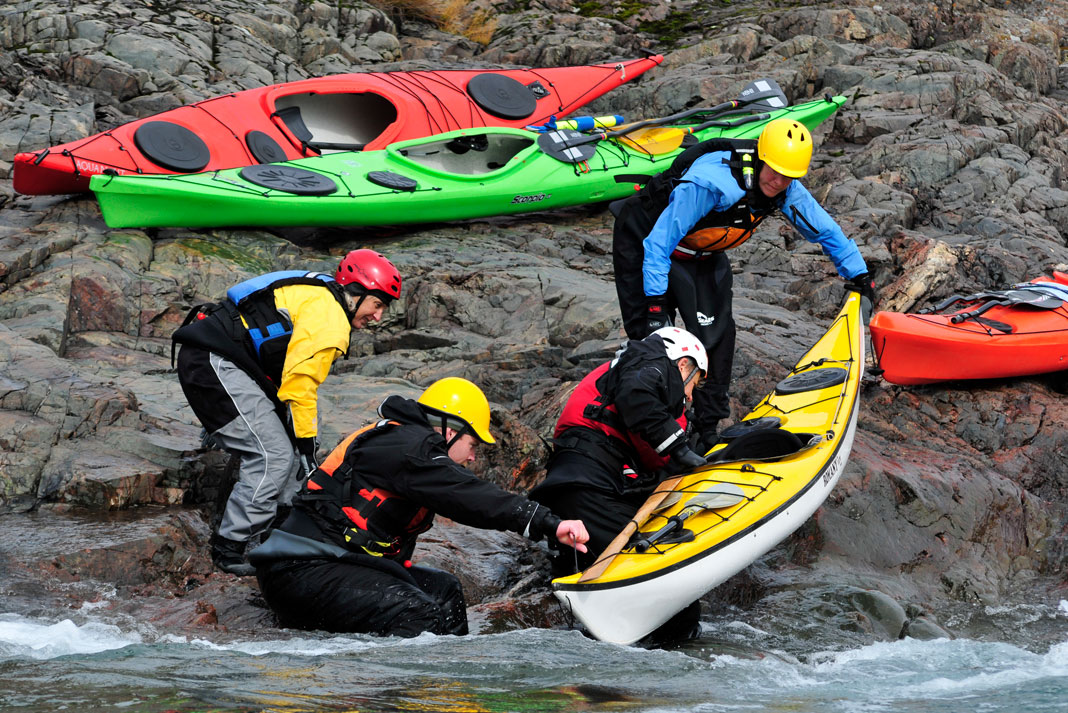
“All events have sustainability issues, and to be honest, all events have a life span,” Dominguez admits.
WMCKA has run its symposium as a club event for 30 years, but the board has watched annual attendance nosedive from over 200 members to just 60 or so in recent years. As original members age out of the sport, the club struggles to attract a younger and more diverse audience.
Last year, WMCKA partnered with two Chicago-area organizations, Chicago Adventure Therapy and REACH, to sponsor 18 at-risk youth to attend the symposium. For the club, which relies on the goodwill and hard work of its donors and all-volunteer staff, it was an immense undertaking—and one that nudged the event’s break-even strategy toward the red.
WMCKA has also tried appealing to rec boat paddlers by offering a dedicated recreational instruction track—an effort met with disappointing results, says Dominguez.
Bush compares targeting recreational kayakers at the symposium level to “offering a high-performance driving school to a commuter in a Kia.” Rec boaters, he says, are more interested in merely cruising from A to B than in developing skills like edging and open-water rescues. “You don’t need a self-rescue class if you paddle a 12-foot, open cockpit kayak.”
The next wave
Beginning 10 years ago, a very different crop of events is redefining the symposium experience.
Keith Wikle says these events offer a more intimate, student-centric experience and steer away from the tired, skill-isolated format of earlier symposia.
“You can’t expect 300 people to show up anymore,” he says. “For example, the Great Lakes Symposium is now designed to work with 65 to 100 participants, and it had a great year [in 2019].”
“Events need to specialize to succeed—you can’t try to be everything to everybody,” agrees Johnston. “Who is your market? What do they want?”
The targeted approach seems to be working for the Ontario Sea Kayak Center (OSKC). Rather than a single catchall event, the Parry Sound-based center has filled the vacuum left by White Squall’s festival with a trio of symposia: Paddlepalooza, Ontario Greenland Camp and Women on Water, a female-exclusive introduction to paddlesports.
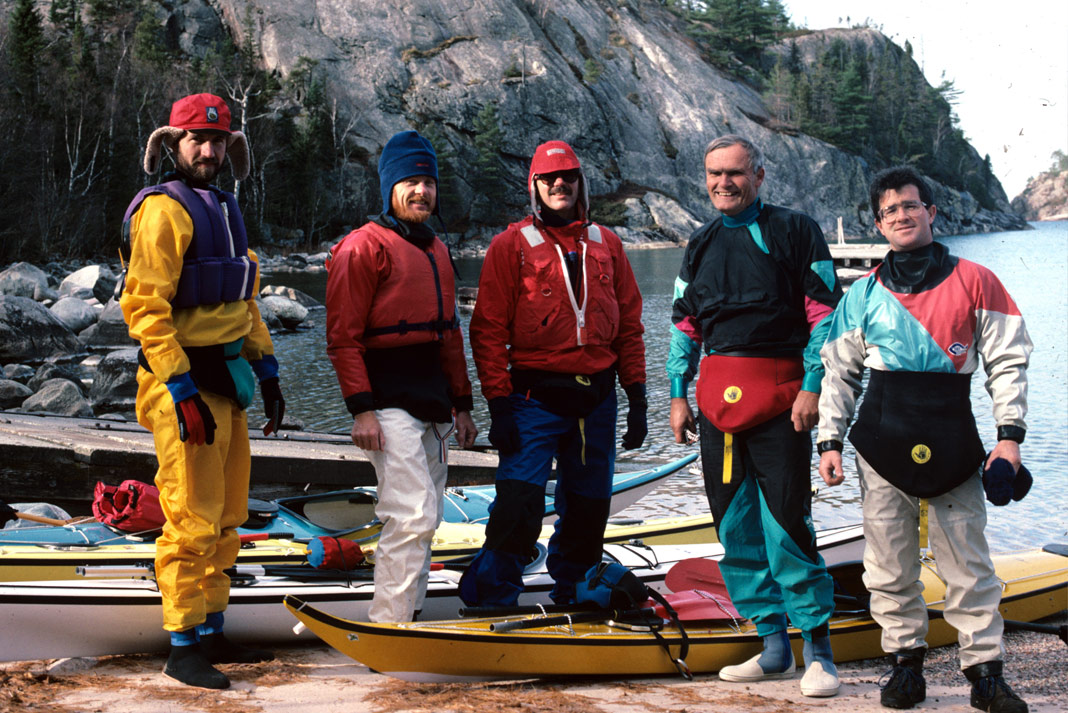
On Lake Superior, Wikle’s Gales Storm Gathering is reviving the rough water tradition of Stan Chladek’s original Gales—with some important updates.
Today’s Gales is held in October and attracts a small number of serious enthusiasts—registration is capped at 35 for the 2020 event. Wikle and co-founder Ryan Rushton looked across the Atlantic to the esteemed Anglesey Sea Kayak Symposium in Wales as inspiration for Gales’ curriculum format. Participants undertake full-day outings with situational coaching based on environment, conditions and the students’ skills and desires.
Since founding the event in 2011, Wikle says he’s seen complete turnover amongst participants every three years—a number he believes is healthy for both the Gales, and the sport.
“Ten years down the road, symposium numbers may not be any bigger than what we see now, but it will be a new group of people,” he predicts.
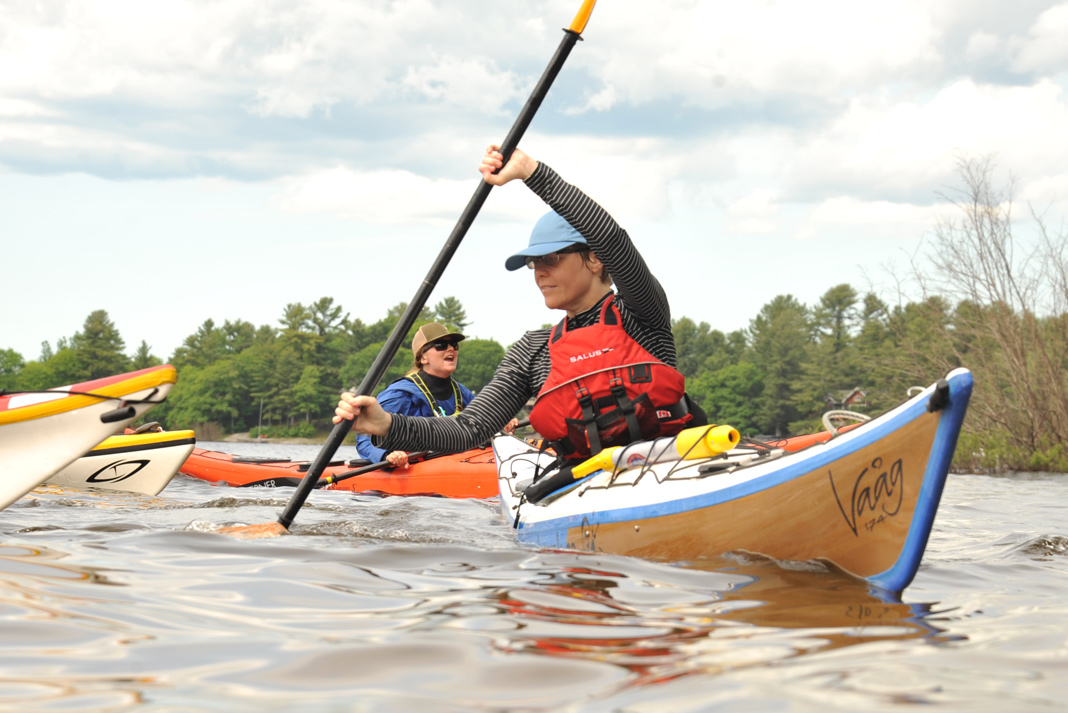
West Coast
Out west, the scene has shifted radically since the days when 1,700-plus paddlers flooded into Port Townsend, Washington’s Fort Worden State Park each September for the West Coast Sea Kayak Symposium (WCSKS). In 2003, when participation peaked, the event was celebrating nearly 20 years.
Despite those numbers, some industry insiders voiced concern about the symposium’s sustainability and its role in growing sea kayaking. Five years later, participation had plummeted to 600. By 2010, the Trade Association of Paddlesports (TAPS) announced their marquee event would not return for a 27th year. What happened?
Mark Hall, director of Kayak Distribution, which manufactures Boreal Design and Riot Kayaks, says working a booth at the event put him on the front line. He believes its collapse was due to what he calls “Greenlander Gore-Tex disease.” Focusing exclusively on those already invested in the sport comes at the expense of enticing new paddlers, he argues.
“In the last days of the symposium, all you saw on the beach were the same Gore-Tex drysuit and Greenland paddle groupies, with signs and schedules highlighting rolling clinics and advanced techniques.”
As far back as 2004, a reporter for online news source SNEWS observed WCSKS’s advanced level workshops were booked solid, while more entry-level courses had weak participation. Then-executive director for TAPS and event organizer, Chris Mitchell, told SNEWS that seeing more enthusiasts than beginners is what they hoped for. “Simply putting ‘butts in boats’ has a very poor conversion,” asserted Mitchell, “enthusiasts drive sales.”
But with boat sales slowing and fresh faces conspicuously absent, Hall wasn’t alone in questioning the industry association’s strategy.
“While Fort Worden State Park is extremely spacious, it could barely contain the egos present,” chided SNEWS. “Many of the highly opinionated have formed camps with themselves as the pied piper leading their merry band of paddlers—and quite small bands at that.”
Rough water on the rise
Around the same time WCSKS was flatlining, the visibility of rough water kayaking was on the uptick. This was in part due to two new events: the Lumpy Waters Symposium in Pacific City, Oregon, and California’s Golden Gate Symposium under the iconic bridge in San Francisco Bay.
“There’s a big gap between the average flatwater club or event and getting out in rough water,” says Paul Kuthe, former program director for Alder Creek Kayak & Canoe, which runs Lumpy Waters. “There’s only so much you can learn from watching a video.”
Outside the safety net offered by symposia, says Kuthe, many paddlers don’t have access to the skill development or peer network to explore those more exposed and dynamic environments.
Kuthe and his fellow Lumpy Waters coaches have shepherded more than 1,300 “alumpni” in the past 10 years. Like Gales’ Wikle, he credits the event’s continued success to its adaptability and student-centered approach.
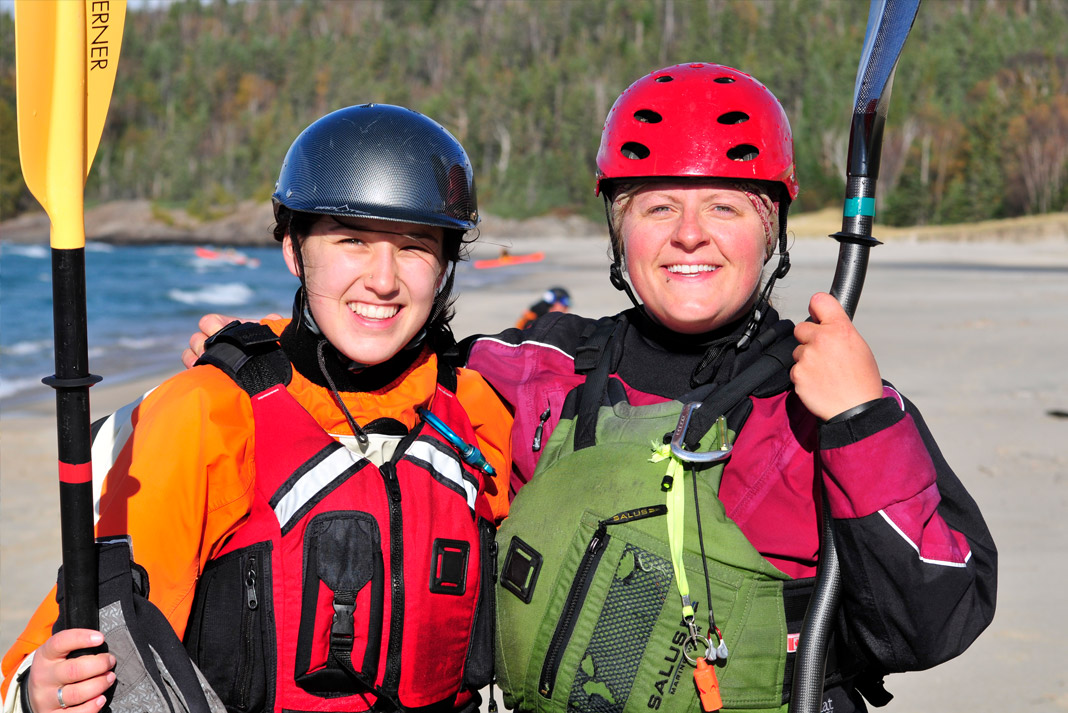
“We build the schedule around the actual students each year,” Kuthe explains. “If their energy level changes, if the weather changes, if they drink too much keg beer the night before—then the schedule adapts to suit those changes.”
This makes rough water events especially challenging for both coaches and organizers. “You need to have incredibly flexible, experienced, confident, agreeable coaches,” says Kuthe. This kind of talent doesn’t come cheap.
With local paddling shops like Alder Creek feeling the pressure of online competitors and big box stores, the symposium experience has to translate into direct sales for brick-and-mortar retailers.
“We’re there because we want to sell boats,” echoes Chris Hipgrave, sales manager for P&H Kayaks, which supports Lumpy Waters along with 15 or so other sea kayaking events from coast to coast.
When I catch up with Hipgrave, he is preparing to kick off P&H’s event season at February’s Paddle Golden Gate.
From a manufacturer’s perspective, Hipgrave says symposia are moving in the right direction. “Rather than having exhausted kayakers stumble over to a demo beach at the end of a long day, when all they want is a beer and some Mexican food, they’re paddling the boats in conditions and seeing what they’re capable of.”
Hipgrave praises symposia’s ability to strengthen connections with participants, coaches, retailers and communities, but cautions there’s plenty of room for improvement.
“It’s very much a 50-and-up sport; we need to do a better job of getting younger people involved. We also need to widen the diversity—it’s still a very white beach.”
Sean Morley, a veteran paddlesports coach and co-founder of the Golden Gate Sea Kayak Symposium, agrees there’s work to be done on making events more accessible and affordable to new and developing paddlers. He says while symposia provide a valuable snapshot of the wants and needs of participants for coaches and industry representatives, intermediate events don’t paint a complete picture.
“The folks attending rough water symposiums are already hooked,” Morley maintains. “Those events just need decent conditions to be successful. The challenge is to create sustainable larger, entry-level events.”
In an ideal world, he argues, novice-friendly events should be free or almost free to attendees. To make this happen, the industry needs to show more significant support in helping with marketing and managing costs.
“So long as we focus on growing the base of the pyramid—getting folks out of their rec boats and into sea kayaks—there is a strong community ready and willing to embrace them.”
The demise of the West Coast Sea Kayak Symposium left a hole in the Pacific Northwest kayaking community. Into that void stepped Janette Galan, a Vancouver Island paddler, coach and professional event coordinator whose extensive project résumé includes tradeshows and outdoor concerts.
“Many of us missed what WCSKS represented in the way of a yearly reunion,” Galan starts, recalling the origin story of Victoria, British Columbia’s Pacific Paddling Symposium (PPS), which enters its eighth year this May.
Using the WCSKS as a starting point “for what we wanted and didn’t want,” Galan and her team envisioned an all-inclusive “adult kayak camp” theme event with the simple mandate: learn, connect, play.
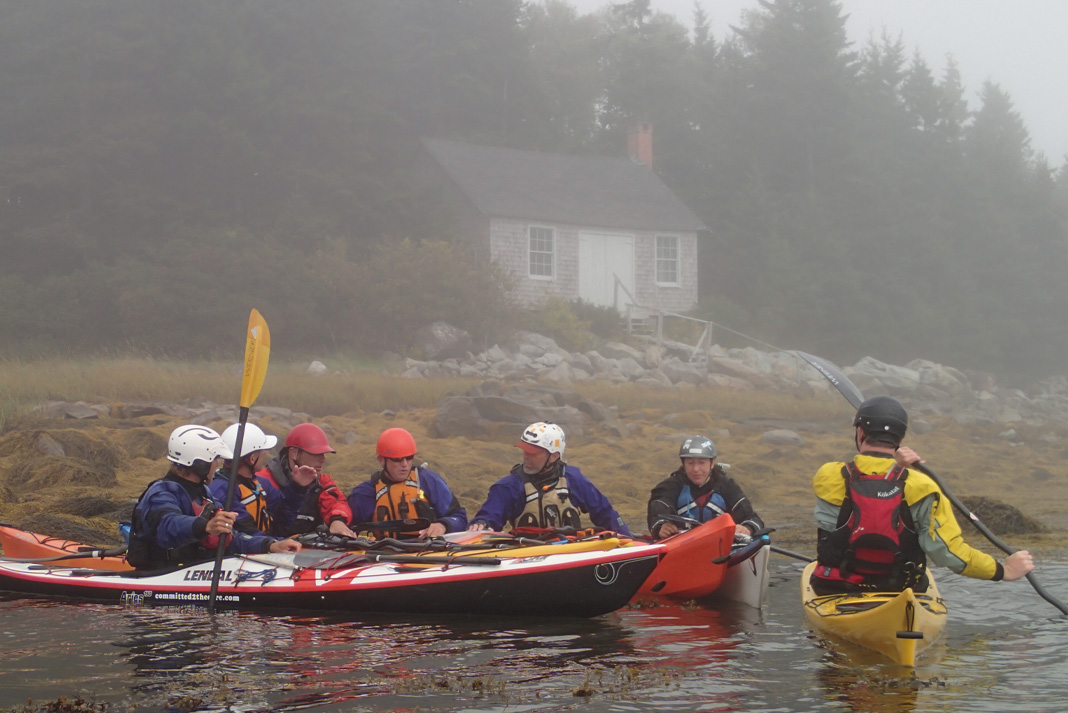
With the inaugural Pacific Paddling Symposium in 2013, Galan says, “We were holding our breath, hoping that our sense of things was correct, and that our kayaking community wanted this event.”
The response from PNW paddlers was both surprising and vindicating, says Galan.
The first PPS sold out in one week, and the event has reached registration capacity more quickly each year since—selling out in just one hour for the past four years. New participants account for between 35 to 45 percent of attendance each year.
Meanwhile, in California, David Santaniello has spent more than a year preparing for the updated and reorganized Paddle Golden Gate symposium. The event is held biannually out of San Francisco’s Marin Headlands, a spectacular location that helps lure an international entourage of coaches and garner the support of major industry players like P&H and Current Designs.
It’s an expensive venue, however, and the first-time event director is keenly aware of the task ahead. Balancing the budget while keeping the bar set high is “the most stressful challenge for me,” he admits.
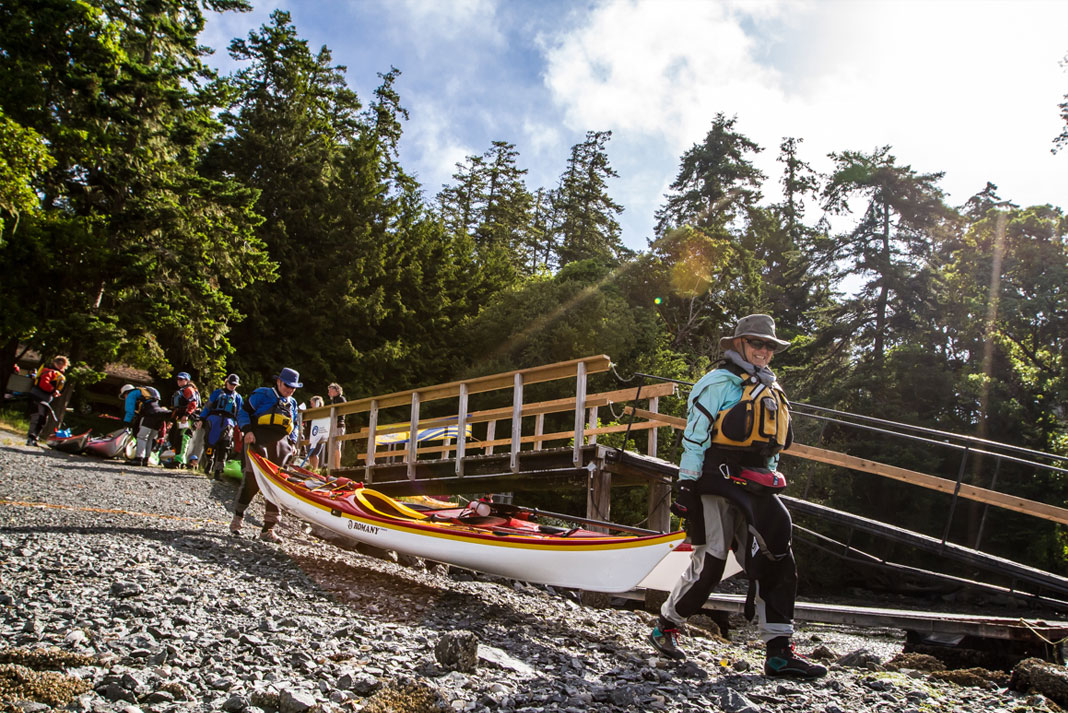
East Coast
I
f there is one element paramount to a symposium’s success nearly everyone agrees upon, it is the location. Whether sheltered, inviting waters for novice participants, or bumps and current to challenge those with more experience. Hit upon a superlative spot, and rest is (relatively) straightforward.
In Charleston, South Carolina, the city’s historic districts and Kodachrome streets provide a colorful backdrop to the East Coast Paddlesports Symposium, which celebrates 30 years in March.
Want to paddle with dolphins or learn to surf? Quiet estuaries and consistent waves offer something for everyone at the Sea Kayak Georgia Skills Symposium on Tybee Island.
Combine fall colors with a dynamic coastline? Check out the Midcoast Sea Kayak Rendezvous, held mid-October on Maine’s Georgetown Peninsula.
How about catching some mid-winter sunshine and outstanding wildlife sightings? Florida’s Gulf Coast hosts the 25th annual Sweetwater Symposium in February.
North of the border, the Bay of Fundy Sea Kayak Symposium (BOFSKS) combines warm Maritime hospitality with an authentic East Coast vibe (think lobster pots and lighthouses), tremendous tides and vast, empty surf beaches. The superb location has helped make this biannual event one of the most prestigious on any coast.
A decade ago, BOFSKS executive director Christopher Lockyer was helping run the Atlantic Paddling Symposium—an all-disciplines paddlesports event migrating between different Atlantic provinces each year. With its ever-changing venues, however, the event fell short as a community-building catalyst.
Lockyer dreamed of a symposium that would stay put and better foster a local ocean kayaking community around his home waters—Nova Scotia’s Bay of Fundy. He organized the first BOFSKS in 2013 and was delighted by the number of enthusiasts, especially Maritimers, who materialized.
Lower Argyle, Nova Scotia—BOFSKS’s home port—offers a windfall of outstanding paddling, but for Lockyer, the location is essential for another reason. He sees the event as a way to inject much-needed tourism dollars into the region’s lean economy.
“You are 130 stones sending your ripples far into the pond,” Lockyer told the paddlers who gathered for the inaugural BOFSKS, “spread the word, tell your friends.”
The way ahead
While there’s a natural ebb and flow of organized events, the state of symposia parallels the state of sea kayaking. As the old guard ages out of the sport, some events also fade into the sunset. For others, the torch is passed.
A new generation of boaters is showing they too have the commitment, vision and creativity it takes to orchestrate these dynamic events.
Today’s symposia may be smaller, but there is plenty to challenge paddlers of every description—from families and first-timers to aspiring intermediates and rough water aficionados. Want to build a Greenland kayak? There’s a traditional skills symposium near you. Can’t get enough of longboat surfing? Take your pick from wave-chasing events coast to coast. Clinics for kids? Women’s weekends? Check and check.
According to the Outdoor Foundation’s 2019 Outdoor Participation Report, nearly three million people identify as sea kayakers, while recreational paddlers now number more than 10.5 million. That’s a lot of folks searching for quick, easy ways to connect with members of the kayaking community, and maybe squeeze in some skill development as well. More important than learning the techniques, however, is the role these events play in shepherding something timeless: a sense of community and belonging.
Virginia Marshall is a former editor of Adventure Kayak magazine.
Students today, leaders tomorrow. | Photo: John Rathwell




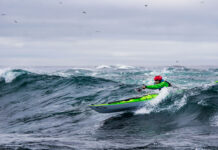

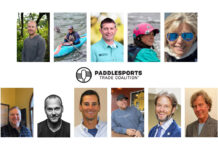


It was Refugee Education & Adventure CHallenge (REACH) that WMCKA sponsored at their symposium in 2019. We are the Chicsgo-based organization that introduces refugee youth to adventure sports. You linked to the wrong organization in this article. REACH is at http://www.reachinchicago.org
Thanks Shana, the article is updated.